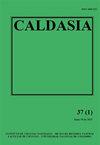基质边缘森林内部梯度对亚安第斯森林碎片中叶口蝙蝠群落的影响
IF 0.3
4区 生物学
Q4 PLANT SCIENCES
引用次数: 3
摘要
边缘效应是森林破碎化的后果之一,也是生态和生态系统过程改变的主要驱动因素之一。营养协会和蝙蝠物种对这种现象表现出不同的反应。我们的目标是描述与基质边缘森林内部梯度相关的蝙蝠物种丰富度、丰度、均匀度和营养群落的物种组成的变化。因此,我们在四个亚安第斯森林碎片(10-50公顷)中用覆盖这种梯度的16个雾网对蝙蝠进行了采样。我们总共捕获了21种叶口蝙蝠中的566只。蝙蝠物种丰富度和丰度在基质和边缘较高,碎片之间相似。均匀度在基质和森林边缘表现出最低的值,并且在森林斑块之间有所不同。一些灌木食草蝙蝠在边缘更为丰富,而另一些则在两个碎片中更为丰富。冠层食草蝙蝠的物种组成沿梯度相似,但碎片之间存在显著差异。相反,在整个基质内部森林梯度和斑块之间,蜜腺动物的物种组成相似。我们的数据表明,蝙蝠在群落水平上的反应受到从基质到森林内部的扰动梯度的影响,即使在距离碎片边界较短的地方也是如此,并且依赖于营养公会。本文章由计算机程序翻译,如有差异,请以英文原文为准。
Effect of the matrix-edge-forest interior gradient on the phyllostomid bats assemblage in sub-Andean forest fragments
The edge effect is one of the consequences of forest fragmentation and is one of the main drivers of alteration of ecological and ecosystem processes. Trophic guilds and species of bats have shown differential responses to this phenomenon. Our goal was to describe the change in bat species richness, abundance, evenness, and species composition of trophic guilds associated with a matrix edge-forest interior gradient. Therefore, we conducted a bat sampling with 16 mist nets covering such gradient in four sub-andean forest fragments (10-50 ha). In total, we captured 566 individuals of 21 species of phyllostomid bats. Bat species richness and abundance were higher in the matrix and edge and were similar between fragments. Evenness showed the lowest values in the matrix and forest edge and was different between forest patches. Some shrub frugivorous bats were more abundant in the edge, and others were more abundant in two fragments. Species composition of canopy frugivorous bats was similar along the gradient but was significantly different between fragments. In contrast, the species composition of nectarivores was similar throughout the matrix-interior forest gradient and between patches. Our data suggest that bat responses at assemblage-level are affected by the disturbance gradient from the matrix to forest interior, even at short distances form fragment borders, and are dependent on the trophic guild.
求助全文
通过发布文献求助,成功后即可免费获取论文全文。
去求助
来源期刊

Caldasia
PLANT SCIENCES-ZOOLOGY
CiteScore
1.30
自引率
16.70%
发文量
28
审稿时长
24 weeks
期刊介绍:
La revista está orientada a publicar contribuciones originales escritas en español o inglés relacionadas con la documentación, comprensión y conservación de la diversidad biológica. La revista contempla el tema de la biodiversidad en un sentido amplio y por tanto incluye trabajos en áreas como botánica, zoología, ecología, biodiversidad, biogeografía, taxonomía, sistemática, conservación, y disciplinas afines.
 求助内容:
求助内容: 应助结果提醒方式:
应助结果提醒方式:


